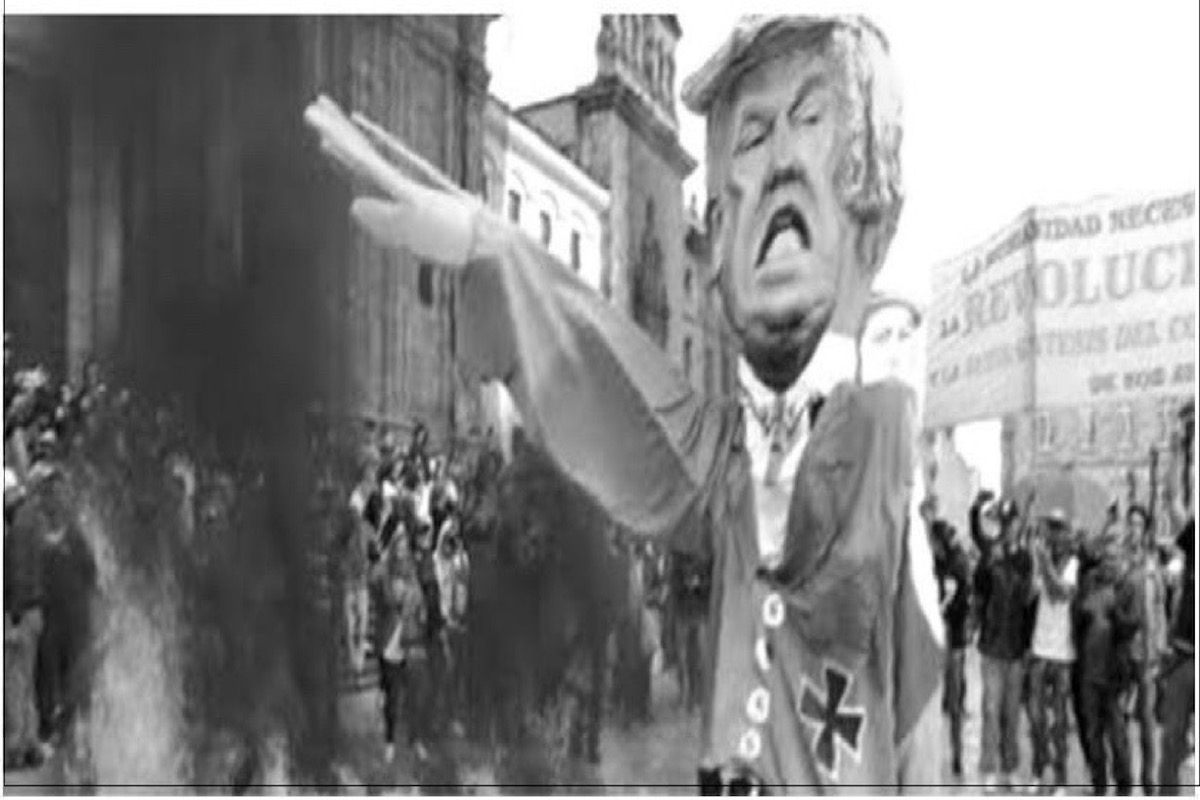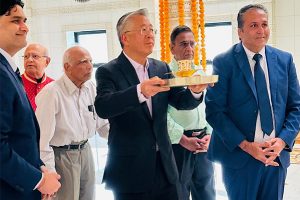The Washington Post Fact checker team catalogued a sum of 30,573 false or misleading statements attributed to Donald Trump himself, whilst in office as the President of United States of America. A staggering 21.9 untruths daily! The desperation had peaked on the last day before voting i.e. 2 November, when he is said to have made 503 untruths in a single day, all to swing elections. Such damning statistics from independent media (often derided as ‘fake news’) and watchdog agencies were up and running from day one of the Trump tenure, owing to the constitutionally protected right to express views, without fear of persecution from the government.
Despite Trump’s bare-knuckled attempts to intimidate and stifle uncomfortable facts with sham aspersions like ‘the enemy of the American people’ ~ portions of the press, citizenry and constitutional institutions refused to compromise or get enthralled by Trumpism and kept invoking the First Amendment. Nothing exemplifies the size-of-fight inherent in a democracy struggling with untruths from its highest offices more than the fact that despite an active and organised opposition, armed with facts and figures, Trump did garner 74.2 million votes or 46.9 per cent as opposed to the winning 51.3 per cent for Joe Biden. It was touchand- go. The unbelievable power of 21.9 average daily untruths, almost lost the day for a country with 99 per cent literacy rate and a GDP per capita that is 34 times that of India!
Similarly, democracies like India are predicated on the principle of rule of the people, by the people. Herein too, the access and quality of information and informed citizenry is a pivotal pillar of effective functioning. The hallmark of the Indian civilisational truth is what the Nobel laureate, Dr Amartya Sen, aptly called ‘The Argumentative Indian’ ~ one who traditionally sought pluralistic, contrarian and unfiltered debate, as an existential necessity, much before the formal conceptualization of ‘democracy’. However today that embedded instinct demands an enabling environment that affords multiplicity of sources to table the relevant and necessary facts and opinions, that are beyond manipulation or control. The marketplace of ideas is essential to nuance, develop, compromise and even align understanding into making the citizenry take more informed choices and reasoned opinions ~ as that allows the activism and dynamism to question various governance or judicial decisions. The spirit of much-needed transparency was inherent in the transformative Right to Information Act, empowering citizenry to seek clarifications and demand accountability.
Comparisons of Indian democracy with the United States are perhaps unfair as India has a considerably lower literacy rate and socio-economic evolution as that of the United States, and the problem is further magnified by a restless mass that is four times that of the US. Even India’s constitutional lifespan is less than a third of the United States, though the framers of the Indian Constitution drafted a truly visionary content, given the backdrop and political temptations, that may have existed then. The Indian Constitution is an exemplar of democratic thought which is far more progressive and enabling towards even more modernist reforms ~ only if it is allowed to be so, as envisaged.
However, there is a topical air of revisionism and nativism that seeks to exploit the democracy’s holiest grail i.e. popular mandate, towards majoritarianism that can undo the fundamental spirit of ‘unity in diversity’ and instead drive, singularity. Such winds naturally disdain contrarian opinion (e.g. recklessly casting labels like ‘anti-national’), abhor transparency (e.g. diminishing provisions of acts like RTI), and even ‘normalise’ implicit threats and violence in casual conversations, all towards compromising factual information for citizenry to make preferences on the basis of manufactured perceptions, and not reality. This militates against the Prime Minister’s thoughtful reassurance that the Indian Constitution is the government’s only ‘holy book’.
Such a denialist and vitiated environment opens space for building ‘new normals’ which can be shaped by those who have the ‘monopoly on truth’ (read, dominating leverage over media). Anyone interfering with that ‘monopoly’ can then be subjected to a barrage of counter tactics ~ immediate and open attack by so-called ‘fringe’, unrelated coercive means on individuals/institutions, and unwarranted contextualisation that may not suggest a position overtly, but certainly builds a monopoly- friendly narrative, surreptitiously and eventually. All these does not require direct statements from the leadership of the ‘monopoly’ forces who can instead offer invaluable narrative- building support through telling silences, downplaying, deflections, ‘selectivism’ and even mealy-mouthed denials, after not having said anything controversial personally. But the charade goes on, the picture is painted, nonetheless. The contrast of dialed-up outrage when an element of the monopoly-challenger force does indeed make wrong statements (immediately attributing that wrong to the entire monopoly-challenger movement), as opposed to the convenient attribution to a ‘fringe’ when such a wrong emanates from a monopoly-friendly mass, is all pervasive.
Democracy triumphs only if facts pertaining to situations are readily available and factually verifiable (by unpartisan sources) – neither of which is reflective of the environment in India, today. The Press Freedom Index ranks the world’s largest democracy i.e. India, at an embarrassing 142 (down from 80 in 2002) ~ putting it below Nepal, Afghanistan, Myanmar etc. With the doubleedged and vulnerable platform of ‘Social Media’ emerging as the most used and convincing source of ‘information’ for over 375 million users in India ~ those with the ‘monopoly on truth’ have an added advantage to muscle their extraordinary resources and potential untruths towards partisan advantage. This disadvantage gets magnified as the monopolyopposers have to ‘slip’ just once, directly or through one of their affiliates (who could also be planted) for that ‘slip’ to be amplified, looped and dramatised to absurd levels of suggestiveness, all very convincingly. Social Media is flooded with divisive and violent opinions (normalising casual statements like ‘these guys should be shot’!) – all without any credible factcheck or veracity. For a democracy that suffered the shame of Emergency, talks about ‘too much democracy’ are unbelievably omnipresent. Opinions coming from governmental sources, however senior they may be in the official hierarchy, is still partisan – the lesson from the United States was that the citizenry called out the lies of the highest constitutional office of the land, without fear of retribution or getting cast as ‘antinationals’. The understanding of the fine difference between the government and the country, was key. India needs to develop its own credibility of media (especially Social Media) so that more civilized, decorous, and transformative discussions can take place.











